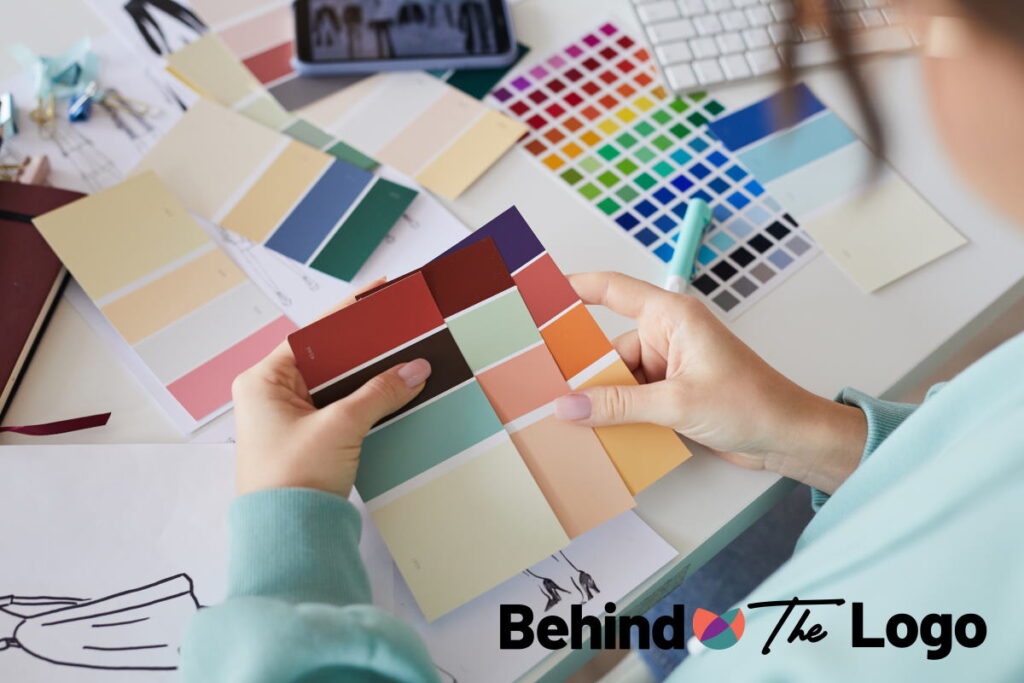The concept of a color palette, in the context of art, design, and visual aesthetics, has evolved over time and is influenced by various factors, including cultural, historical, and technological developments. The origin of color palettes can be traced back to early human civilizations.
Prehistoric humans used naturally occurring pigments such as ochre, charcoal, and minerals to create cave paintings. These pigments were limited in number and primarily consisted of earthy tones like red, yellow, and brown. Over time, as societies developed and artistic techniques advanced, new sources of color became available, expanding the range of available pigments.
The ancient Egyptians developed a sophisticated system of color symbolism and used a broad range of pigments. They created their pigments from various sources, including minerals, plants, and insects. Egyptian art often featured vibrant colors such as blues, reds, and yellows.
In classical antiquity, the Greeks and Romans further explored the use of color in art. They developed various pigments, including some derived from minerals like cinnabar (red) and lapis lazuli (blue). These pigments were used in frescoes, mosaics, and sculptures.
During the Middle Ages, the palette of colors shifted due to cultural and religious influences. Religious art predominantly featured symbolic colors such as gold, red, blue, and white, which were often associated with divinity, purity, and royalty. The limited availability of certain pigments during this period also influenced the color palette.
The Renaissance marked a significant shift in art, with a renewed interest in naturalism and the study of light and shadow. Artists like Leonardo da Vinci and Michelangelo expanded the color palette, incorporating a wider range of hues and exploring new techniques. They developed new pigments, such as lead white, vermilion, and ultramarine blue, which allowed for greater color expression.
With the advent of modern chemistry in the 18th and 19th centuries, artists gained access to a broader spectrum of synthetic pigments. This led to further expansion of color palettes in various art movements like Impressionism, Post-Impressionism, and Fauvism, where artists experimented with bold and expressive color combinations.
Today, the color palette continues to evolve, influenced by artistic trends, cultural preferences, technological advancements, and the availability of pigments. Artists, designers, and other creative professionals often create and customize their color palettes based on their specific needs and aesthetic goals. Additionally, digital tools and software have made it easier to explore and create unique color combinations, leading to a more diverse and personalized range of color palettes.
The concept of a color palette, in the context of art, design, and visual aesthetics, has evolved over time and is influenced by various factors, including cultural, historical, and technological developments. The origin of color palettes can be traced back to early human civilizations.
Prehistoric humans used naturally occurring pigments such as ochre, charcoal, and minerals to create cave paintings. These pigments were limited in number and primarily consisted of earthy tones like red, yellow, and brown. Over time, as societies developed and artistic techniques advanced, new sources of color became available, expanding the range of available pigments.
The ancient Egyptians developed a sophisticated system of color symbolism and used a broad range of pigments. They created their pigments from various sources, including minerals, plants, and insects. Egyptian art often featured vibrant colors such as blues, reds, and yellows.
In classical antiquity, the Greeks and Romans further explored the use of color in art. They developed various pigments, including some derived from minerals like cinnabar (red) and lapis lazuli (blue). These pigments were used in frescoes, mosaics, and sculptures.
During the Middle Ages, the palette of colors shifted due to cultural and religious influences. Religious art predominantly featured symbolic colors such as gold, red, blue, and white, which were often associated with divinity, purity, and royalty. The limited availability of certain pigments during this period also influenced the color palette.
The Renaissance marked a significant shift in art, with a renewed interest in naturalism and the study of light and shadow. Artists like Leonardo da Vinci and Michelangelo expanded the color palette, incorporating a wider range of hues and exploring new techniques. They developed new pigments, such as lead white, vermilion, and ultramarine blue, which allowed for greater color expression.
With the advent of modern chemistry in the 18th and 19th centuries, artists gained access to a broader spectrum of synthetic pigments. This led to further expansion of color palettes in various art movements like Impressionism, Post-Impressionism, and Fauvism, where artists experimented with bold and expressive color combinations.
Today, the color palette continues to evolve, influenced by artistic trends, cultural preferences, technological advancements, and the availability of pigments. Artists, designers, and other creative professionals often create and customize their color palettes based on their specific needs and aesthetic goals. Additionally, digital tools and software have made it easier to explore and create unique color combinations, leading to a more diverse and personalized range of color palettes.



